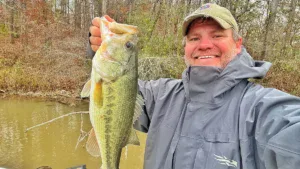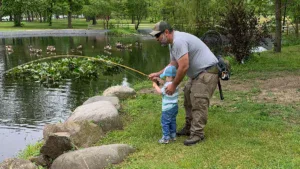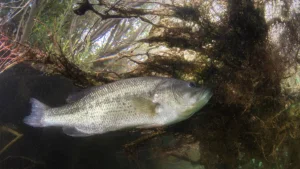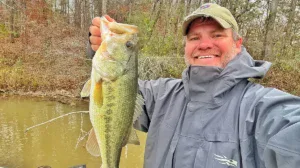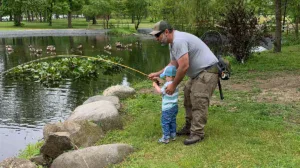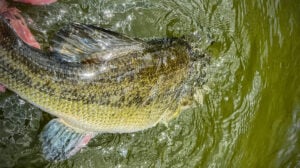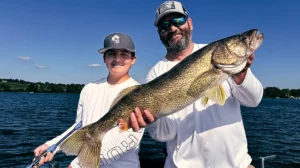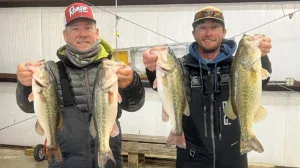As a self-characterized super-fast power fisherman, Brandon Cobb knows that slow and methodical is the only way to trigger bass much of the time. He shares his go-to weightless worm setup and explains when to rig one up and how to fish it through grassy fish-holding areas to generate maximum bites.
He sneaks in some interesting insights along the way, like how determining bass sex can tell you if you’re in a good area and why having your boat pinned down while casting is more effective than moving along.
FEATURED TACKLE AND GEAR
- WORM – Zoom Zlinky Stick Worm, color – June Bug
- HOOK – Berkley Fusion19 Offset Worm Hook, 4/0
- ROD – ARK Brandon Cobb Series Do-All Casting Rod, 7’3″ Med Hvy/Fast
- REEL – Abu Garcia REVO STX Casting Reel, 7.3:1
- LINE – Yo-Zuri T7 Fluorocarbon, 12-16 pound test
- SUNGLASSES – Costa Del Mar Reefton
- SHALLOW WATER ANCHOR – Power-Pole Blade Shallow Water Anchor CM2, 8′ Black
Here’s Cobb’s 6 step action plan to catch negative bass on weightless worms:
- Choose the weightless rigging method based on the cover. Wacky rig if vegetation isn’t too thick. Rig up a weightless Texas rig around thicker grass — regular fowling or getting hung in the grass is a good determining factor.
- Use an offset worm hook (if Texas rigging). Avoid using an extreme wide gap (EWG) hook, as the wider gap makes the bait less streamlined and more likely to hang on grass. Also, consider that a stick bait is slim, so you don’t gain much in the way of hooking percentages with the extra gap. As always, size your hook to the lure with a 4/0 being the best all-around for a 6-inch bait. Rig it straight and true to prevent twirling and line twist.
- Fish slow and deliberately. For Cobb, a typical cast involves casting out, letting the bait sink to the bottom, pulling the bait forward and up, and then fluttering back down. It doesn’t feel like much, but that’s the point — few presentations are as stealthy and natural as a straight worm soaking and slithering through the grass. A slow retrieve keeps the bait in the strike zone longer, a must to coax the bite.
- Use shallow water anchors (if equipped). Pinning the boat in place lets Cobb thoroughly fan cast productive areas and retrieve with a focus on feeling the bait. You can’t pull this off if you’re in motion (drifting or trolling motor momentum). Florida bass usually group up, so each bite is a key bite and tells of more fish in the area. Immediately drop the poles and fast cast. Make your move to a new place after a complete fan cast, then repeat with the poles down.
- Use a general-purpose medium-heavy rod. Cobb uses his namesake Cobb Series 7’3’’ Medium-Heavy Do-All casting rod. A fast tip coupled with a stiff midsection provides the sensitivity to feel and work the worm through cover and the backbone to drive worm hooks home. He prefers fluorocarbon in the 12- to 16-pound range, depending on how thick the grass is—nothing super specific here.
- Use your eyes. Your eyes, coupled with a good set of polarized sunglasses, are your fish finders. Look for subtle cues like bass beds, vegetation types, and baitfish — correlate these observations back to any fish activity you’ve been seeing and seek out similar habitats.


